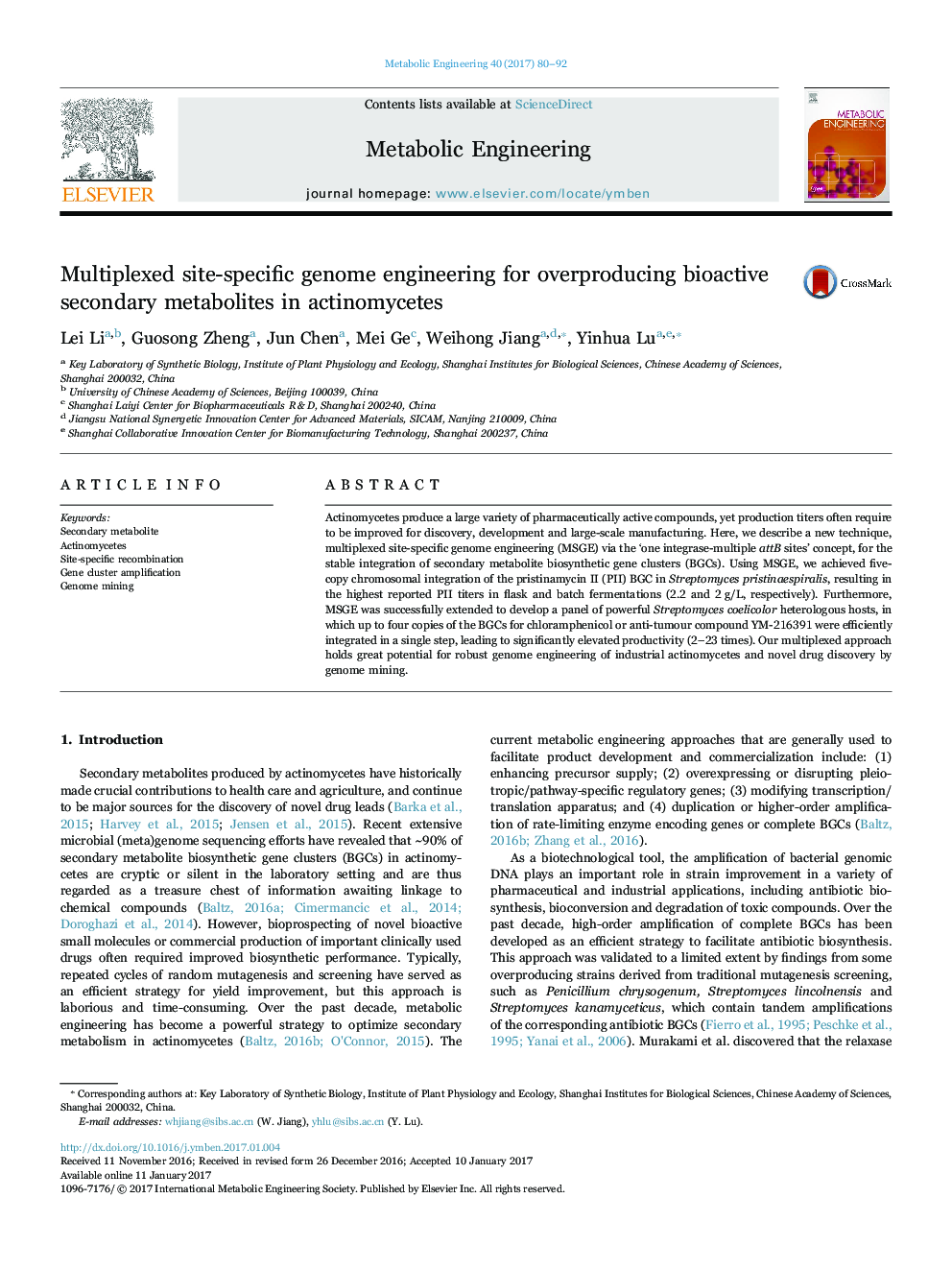| Article ID | Journal | Published Year | Pages | File Type |
|---|---|---|---|---|
| 6452706 | Metabolic Engineering | 2017 | 13 Pages |
â¢A general approach for the stable amplification of secondary metabolite biosynthetic gene clusters in actinomycetes.â¢A panel of powerful Streptomyces coelicolor heterologous hosts for genome mining of natural products.â¢A novel DNA editing method for rapidly refactoring gene clusters, including deletion and replacement.
Actinomycetes produce a large variety of pharmaceutically active compounds, yet production titers often require to be improved for discovery, development and large-scale manufacturing. Here, we describe a new technique, multiplexed site-specific genome engineering (MSGE) via the 'one integrase-multiple attB sites' concept, for the stable integration of secondary metabolite biosynthetic gene clusters (BGCs). Using MSGE, we achieved five-copy chromosomal integration of the pristinamycin II (PII) BGC in Streptomyces pristinaespiralis, resulting in the highest reported PII titers in flask and batch fermentations (2.2 and 2Â g/L, respectively). Furthermore, MSGE was successfully extended to develop a panel of powerful Streptomyces coelicolor heterologous hosts, in which up to four copies of the BGCs for chloramphenicol or anti-tumour compound YM-216391 were efficiently integrated in a single step, leading to significantly elevated productivity (2-23 times). Our multiplexed approach holds great potential for robust genome engineering of industrial actinomycetes and novel drug discovery by genome mining.
